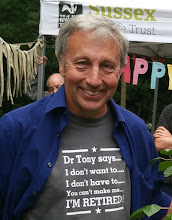In my last blog I tried to summarise current descriptions of “ecosystem services” – descriptions mostly pinched from the UK National Ecosystem Assessment. This time I’d like to go a little further and talk about how wildlife, or biodiversity, fits in this overall approach.
It might help to see ecosystem services almost in a hierarchical sense:
- First you have the services that underpin all other services. These are often the “support” and some “regulating” services such as nutrient cycling, plant growth, soil formation and the major ecological processes like evolution and interaction between species. These are the “primary ecological functions” on which all other services sit.
- At the next level are the “final ecosystem services” – the services we actually see or experience such as crops, livestock, trees, waste breakdown, the local climate, meaningful places and a diverse wildlife.
- Finally are the “goods” we receive such as food, drinking water, energy, flood control and recreation. Some of these goods have a recognised financial value to us, some have a financial value but it is not recognised and some have non-monetary values.
As in my last blog, you can find a far better description at the UKNEA web site:
http://www.uknea.unep-wcmc.org/
This is summarised in the table below:

This hierarchy is important. We often only see the goods we get, many are poorly valued, we often take them for granted and often consider them in complete isolation from each other or the environment on which they depend. Yet these goods are the products of ecosystem services which are in turn reliant on the primary ecological functions.
So where does wildlife fit in? In practice it is fundamental at every level:
Ecosystems are made of wildlife. So biodiversity underpins the primary ecological functions that all subsequent ecosystem services and the goods we receive rely on. All the big-picture ecological functions, like nutrient cycling, plant growth, climate control and pollination, all rely on healthy, functional ecosystems. Healthy ecosystems are composed of a rich biodiversity and, conversely, a healthy ecosystem is also indicated by the health of its biodiversity.
At the next level biodiversity fits in in a very practical way. It provides the species that make up our crops and livestock, provides wood, fibre and pharmaceutical products. So wildlife is central to our provisional services.
Wildlife is also valued by people so is central to cultural services. It is important for spiritual enrichment, in recreation and in education. The wildlife of an area also helps to define that area and give a sense of place. All of this has repercussions in terms of physical and mental health, and in terms of how desirable a place may be to live and work in.
This outline for the value of biodiversity to ecosystem services is summarised in the table below:

To conclude, therefore, a superficial understanding of ecosystem services could miss the central importance of wildlife. Indeed if some ecosystem services are over-emphasised then we could end up with a business as usual situation with wildlife being further compromised away. But when it is thought through a little it should be clear that biodiversity is of fundamental importance to the effective provision of the ecosystem services on which we all depend.

No comments:
Post a Comment